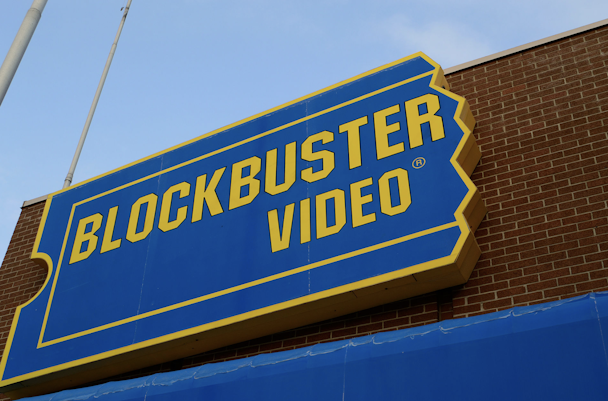Beware the Blockbuster moment: pioneering the new industry paradigm of exponential creativity
Complaining about the traditional ad agency model may not be quite as old as the model itself, but it comes close. Yet the model is still with us.

But potentially not for much longer with looming un-bundling potential. The advertising industry is getting essentially perilously close to what I call its “Blockbuster moment.” Blockbuster should have seen Netflix and Amazon coming—and it did, in fact: Blockbuster chief executive John Antioco was approached in 2000 by Netflix chief executive Reed Hastings about purchasing the then DVD-rental-by-mail company. But Blockbuster couldn’t bring itself to adapt.
Now, the advertising industry is at a similar inflection point. Clients are demanding smarter, more relevant content, more measurable and with more proven ROI.
Any new business model for the advertising industry will have to incorporate these principles: the eradication of the basic conflict of interest inherent in multiple profit-and-loss centers under one roof; the creation of a structure based on absolute transparency; and the ability to match talent to a wide range of different needs and budgets adroitly and rapidly. But what will the new model actually look like? Most likely, it will not be just one.
Agency veteran and Bartle Bogle Hegarty founder Sir John Hegarty has said that in an age of disruption there is one constant and that is the power of creativity. The challenge, he says, is how we embrace and promote this power. Hegarty recently became Chairman of the young company Whalar with a global community of social media creators and a mission of liberating the creative voice. In a similar space is HypeFactory, which matches influencers with clear, transparent metrics to brands.
Judy Shapiro, the chief executive and founder of EngageSimply, favors another model emphasizing agility, measurability and efficiency through a core team demonstrating three critical competencies: progress planning, performance planning and platform planning.
And I advocate another: a collective of 1,000+ full-time, full-on “creatives”— not just strategists, copywriters, social media creators and art directors, but videographers, music composers, photographers, set designers, CGI specialists and everyone else needed to produce content at the intersection of brand and commerce for both old and emerging platforms. All dispersed geographically—for cultural relevance—from Atlanta to London to Singapore—and all work accounted for under one single P&L, providing a win/win scenario for both brands and agencies.
This new agency’s creative kitchen is a team of nimble, inventive young chefs, with no maître d’, no sommelier, no starchy waiters - open kitchen of more doers and makers than the layer “client management” personnel who create completixity and tangled up creative output at the outset. The new agency, based on skill and custom solutions rather than tenure, might require a thin layer of management on top, but no more than 20% of its full-time employees, compared to some 80% in the old model.
The internet and social channels have nibbled away at that model. Instagram, Facebook, YouTube and Twitter demand their own immersive content — each tailored to its particular platform and audience.
We live in a time when speed and scale, along with personalization and localization, are prized. Clients need to be agile, able to verify effectiveness, know where every penny of their budget goes, and that the price for each service matches their marketing goals and budget. And, if a job costs $10 per hour in Syracuse or Mexico, that’s what the client pays.
This requires absolute transparency on an agency’s part. Traditional agencies need to structure to provide this level of clarity, which is not exactly a secret in the business. Think Association of National Advertisers and The Department of Justice.
The old model presupposes that a big agency with a big client needs to be in many markets at all times. Under that traditional model, agencies have to keep the lights on in all their offices and subsidiary agencies, each of which has its own profit-and-loss statement to look after. You could say the modern agency holding company operates like a series of franchises, each with varying levels of skin in the game, unified under a single brand.
Back to Madison Avenue’s Blockbuster moment: In 2008, with the handwriting clearly on the wall, Blockbuster proposed a desperate step to survive: it tried to acquire Circuit City, a struggling chain of electronics stores as dependent on old media as Blockbuster. The acquisition never happened. Circuit City went out of business, and subsequently, satellite TV company Dish Network bought Blockbuster. Today the name Blockbuster lives on in 10 franchise-owned stores, down from 6,500 stores worldwide in 2010. Think about that.
Shifting course with the changing consumer tide is paramount in order to meet client and market demand. Creativity is our business, so let’s get creative here and collaborate, connect, and create under this new model – because the new agency paradigm and our industry’s blockbuster moment is already here, so let’s disrupt – together - before disruption happens without us.
Now think about THAT instead.
Myles Peacock is chief executive of CreativeDrive

